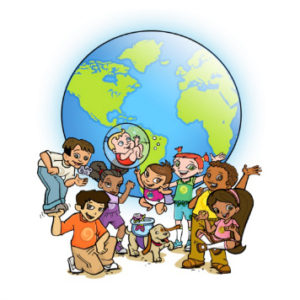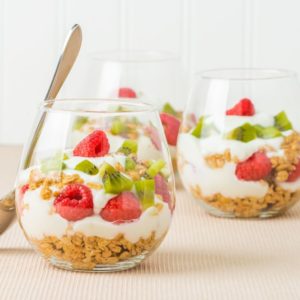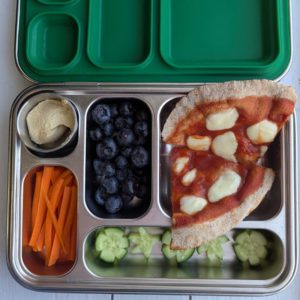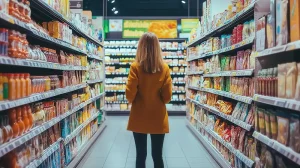
It’s no secret that bright, vibrant colors attract children to food products. A large portion of children’s cereals, beverages, and treats are brilliant shades of the rainbow. And they’ve become a more and more popular discussion in the media. Do you ever wonder how these foods got their colors?
There are many side effects of artificial colors that impact the safety, behavior, and health of our children. Here are the key things to know.
What is Food Coloring Made Of?
The majority of these products are loaded with artificial food dyes – synthetic chemicals that are made in a lab and never found in nature. Think Red No. 40, Blue No. 2, or Yellow No. 5. To top it all off, artificial food colorings are usually based in petroleum chemicals or from crude oils that are not naturally occurring. (1)
So why do food companies load up children’s food products with these artificial chemicals? Simple. They are cheaper than natural dyes and produce longer-lasting, brighter colors that attract consumers. This translates to better sales and higher profits for food producers.
Side Effects of Artificial Colors

Artificial food dyes were approved by the FDA for use in food products beginning in the 1960s. To date, there are nine artificial food dyes permitted for use in the food supply. While they are considered “Generally Recognized As Safe” (GRAS) by the FDA (1), several studies have identified some side effects of artificial colors to increase the risk of allergic reactions and hyperactivity in children (2).
Animal studies have pointed to a possible link between certain food dyes and cancer, as some dyes are carcinogenic themselves or may be contaminated with carcinogens. Obviously, given the risks, we wouldn’t test for cancer risk in humans, so no studies exist. Animal studies also pointed to a link between food dyes and hypersensitivity or allergic reactions. (3)
Red Dye No. 40 Side Effects
- Allergic reactions: Red Dye No. 40 may trigger allergic reactions like hives, asthma, sneezing, watery eyes, or skin irritation. (4)
- Hyperactivity in children: It has been linked to increased hyperactivity in children, particularly those already sensitive to additives. (2)
- Animal studies: Research on animals suggests that consuming high amounts of Red Dye No. 40 may lead to the faster development of tumors. (5,6)
Blue Dye No. 1 and No. 2 Side Effects
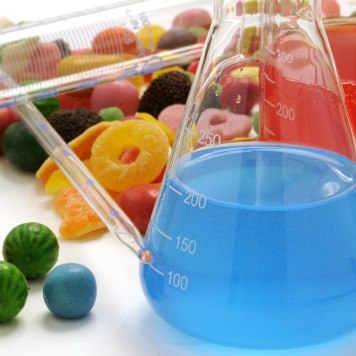
- Cancer risk: In animal studies, long exposure to Blue Dye No. 1 showed an increased risk of cancer compared to animals without exposure. (7)
- Neurotoxicity: Some studies also raised concerns about potential damage to the brain (neurotoxicity) from long-term exposure to Blue Dye No. 1. (8)
- Brain cancer risk: For Blue Dye No. 2, animal studies showed a significant link between high doses and a greater risk of brain cancer. (9, 10, 11, 12)
Yellow Dye No. 5 Side Effects
- Allergic reactions: Similar to Red Dye, Yellow Dye No. 5 can cause allergic reactions like hives and asthma. (13)
- Hyperactivity in children: In a summary of evidence presented to the FDA in 2011, some studies showed that children consuming Yellow Dye No. 5 were more hyperactive than those who didn’t consume it. (14)
- Cell damage: One study suggested that long-term exposure to Yellow Dye No. 5 could damage white blood cells, making them more likely to mutate into cancerous cells. (15)
Yellow Dye No. 6 Side Effects
- Allergic reactions: Hypersensitivity to Yellow Dye No. 6 has been recorded, and it may also contribute to hyperactivity in children. (16)
California Food Dye Ban
Exciting news! In September 2024, the California legislature signed a new bill into law banning 6 food dyes in school food which will take effect December 31, 2027. The banned dyes include:
- Red No. 40
- Blue No. 1
- Blue No. 2
- Yellow No. 5
- Yellow No. 6
- Green No. 3
These dyes will be banned due to their potential negative side effects including hypersensitivity and allergic reactions, hyperactivity, and behavioral problems. (17)
As a California resident, I am thrilled to see my state taking steps to protect our children from the negative effects of unnecessary food additives! Why would we place our children even potentially at risk for a colorant that we don’t need anyway?
FDA Revoking Use of FD&C Red Dye No.3
Thanks to the Center for Science in the Public Interest’s (CSPI) color additive petition, FD&C Red No. 3 has finally been banned. This synthetic food dye, known for its bright cherry-red color, has long been a concern. Food manufacturers using FD&C Red No. 3 must reformulate their products by January 15, 2027, while those producing ingested drugs have until January 18, 2028, to comply. Interestingly, the FDA prohibited its use in cosmetics over 30 years ago, yet it continued to be used in foods and drugs until now.
Color Additives in Food
Although we usually associate food color additives with sugary treats like candy, they can be hidden in many unsuspecting foods. Check out this list of shocking foods that contain artificial colorings! Be sure to read the labels to determine whether your favorite brand contains dyes.
- Baked goods
- Beverages
- Cereal
- Chewing gum
- Chips
- Condiments
- Crackers
- Flavored instant oatmeal
- Granola Bars
- Ice cream
- Jello
- Lip balms
- Lunchables
- Over-the-counter medicine for kids (like cough medicines or antihistamines)
- Pickles
- Sports drinks and soda
- Toothpaste and mouthwash
- Yogurt
- Vitamins
Food dyes to avoid
The food dyes to avoid or limit their consumption are the ones that have talked about here: Red 40, Yellow 5 & 6, and blue dyes. Let’s get REAL! These color additives in foods can cause some real harm to your family so it’s best to start consuming REAL foods!
How to Avoid Food Dyes
Let’s show our kids that artificial is OUT and REAL is in. Teach your kids that super kids are always in the mood for real food!
Make it fun by teaching your children a new fun fact with each healthy colorful food they enjoy. For example, you can teach them how NATURALLY red strawberries are a great teeth whitener. They have an enzyme called malic acid that loosens stains on our teeth.
Having Fun with Natural Colors from Food
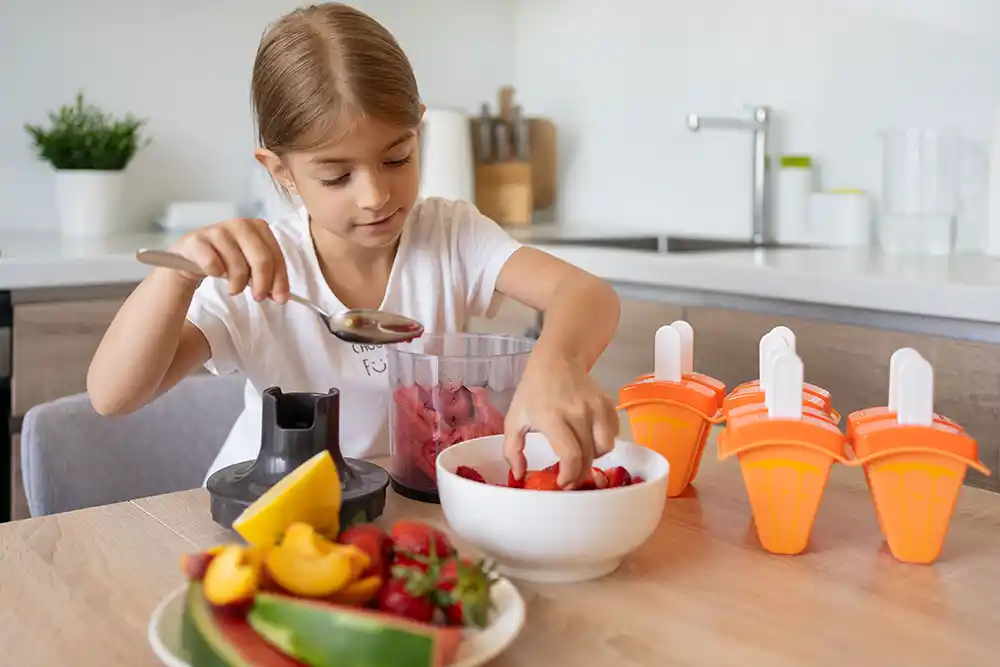
REAL doesn’t need to mean no fun. Why not add color naturally? Here are some great natural suggestions:
- Red-Lipped Cherry Challenge: See who can get the reddest lips and tongue from eating frozen cherries! Cherries are naturally sweet and packed with antioxidants that help protect the body from damage.
- Fruit Juice Popsicles: Make your own homemade fruit juice slushies or popsicles using 100% grape juice, or try blending frozen berries for a naturally colorful and nutritious treat. Not only are they refreshing, but these colors come from nature’s own pigments packed with phytonutrients. Some of my favorite summer memories include homemade grape juice pops!
- Colorful Teas for the Win: Purple, pink, or orange—experiment with naturally colorful herbal or fruit teas, perfect for warm or iced drinks. These fun drinks make great alternatives to artificially colored beverages while building healthy habits that protect against diseases, including cancer, later in life.
- Nature’s Paintbrush: Teach your kids how fruits and vegetables like beets, spinach, carrots, and turmeric can naturally color foods like homemade cupcakes, smoothies, or pasta. Kids can even “paint” their food by decorating cookies with fruit puree or vegetable-based natural dyes.
- Blueberry Smile Contest: Have a “blue tooth” contest and see whose teeth and tongue can get the bluest from eating frozen blueberries. Bonus—blueberries help boost brain power and keep hearts healthy! Invite your kids to discover new foods, embark on tasty adventures, and enjoy fun activities inspired by nature’s vibrant colors with the Super Crew books for kids.
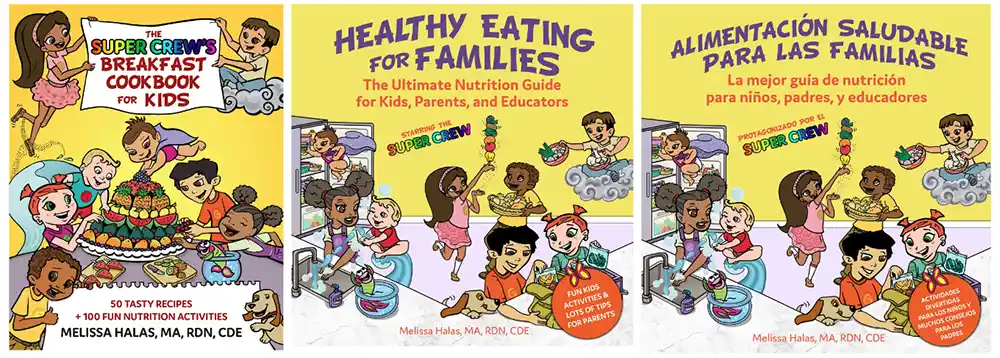
Real food, real fun, and real health benefits! Help your children discover that the vibrant colors of nature can be just as exciting as artificial ones, while also supporting their overall health and development.
Side Effects of Artificial Colors: Main Take Aways
Side effects of artificial colors generally can cause hyperactivity and hypersensitivity that may come from a food dye allergy. When consumed in large amounts over a long period of time, food dyes can start to cause harm to you and your children since they are more sensitive to the side effects of artificial colors. It may be best to avoid food dyes as much as possible to minimize the harmful effects.
Don’t stop at food colorings, have them look for other food additives that sound like alien words and are strange and hard to pronounce –because they’re usually not real food ingredients! For more information on the dangers of artificial food dyes, check out our suggested comprehensive review of the subject: Food Dyes, A Rainbow of Risks.
I first wrote this article over 15 years ago and recently updated it. It’s surprising that food dyes still remain in our food supply despite being removed from similar products in Europe and Canada. Learn why food dyes are classified as ultra-processed foods and explore practical tips for reducing them in your child’s diet. Visit my nonprofit, The Non-UPF Program, and be part of the movement toward healthier, less processed food choices.
This article was updated in November 2026 from its original publish date in September 2007.
